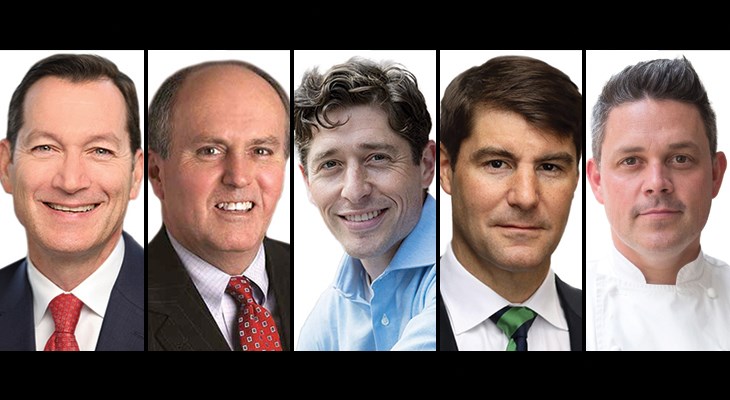Minneapolis Mayor Jacob Frey believes the city has a lot of momentum. And while things are coming back to its urban center in a big way, they will forever be different.
"We're not going to just get back to the old normal and call it a day," Frey said at the Minneapolis Smart Business Dealmakers Conference during the keynote panel, moderated by Taft, Stettinius & Hollister Partner Dennis Knoer. "There is going to be change. And I think it's ultimately the cities that are not clinging white knuckle to what once was, but are embracing the future, that are ultimately going to have the most success."
Part of embracing the future is to reimagine how downtown functions, "and it can't just be commercial," he says. "The way we are going to get success is with a beautiful diversity of both use and people. The neighborhoods in Minneapolis and nationwide that are seeing the most success have residential, they have commercial, they have even light industrial, they have entertainment, they have restaurants, they have everything all in one area. Because when you get that diversity of views, one, you get eyes, which drives down crime, keeps people safe; two, you create a dynamic on the street that is unparalleled, where the people-watching is amazing. Rather than one big vanilla conglomerate on each block, there's five or six or eight different small and locally owned joints with different tastes and smells and sounds and people all packed in. That's what makes a city exciting. And that's what we've got to be leaning into, not just in North Loop, but also in the core of downtown."
Steve Cramer, President and CEO of Minneapolis Downtown Council, says in 10 years he imagines the city's urban center will have more of a 24/7 population in the core.
"One of our strengths is we've got this growing residential population. But as more of that comes into the core, in part because of the office-to-residential conversion process where that is possible for office buildings that are not going to compete well for shrinking overall office demand, the upside is that you got more people living in in the core of downtown and adding to that vitality," Cramer says. "I think we'll have a spaces that are vacant now because they were the old 20,000-, 30,000-, 40,000-square-foot retail space that just doesn't have a future anymore. It's going to take some work to convert that to the kind of experience ... in North Loop just because of the difference in the physical inventory of buildings."
Additionally, he says the aim is to continue to double down on the things that can only be done in downtown — the professional sports, high-class theater, conventions, and world-class restaurants.
'That's going to continue to be a leading edge of vitality along with these other changes that we're going to see," Cramer says. "So, I have a lot of optimism about the future of downtown. We do have this chance to create a really vibrant new downtown and I'm excited to see it happen."
Gavin Kaysen, Chef and Owner of Soigné Hospitality Group, says in his role, it's all about restaurants and hospitality, so he would love to see more people finding opportunities to move their businesses to downtown. He says a recent edition of Wine Spectator magazine lists 10 destination cities for food and drink, and Minneapolis is one of them. The beauty of that, he says, is the restauranteurs in the city don't see themselves as competing against one another. Rather, he says, they feel they're competing against all other cities.
"Ego or not, that's the reality of how we feel," Kaysen says. "And so what we're doing is we're doubling down on that. And we're encouraging our young talent to stick with us so that way when they're ready to go and succeed and do more, we're there to help them."
Benjamin Hawn, President and COO of Pohlad Companies, says despite the talk of change and conversion happening in city centers, he doesn't want to give up on office.
"It should absolutely be a core central tenant of what happens in downtown Minneapolis," Hawn says. "It's where business gets done. I do think that the script is flipped a little bit. We used to have amenities downtown because we had a core office population, it needs to be the other way."




